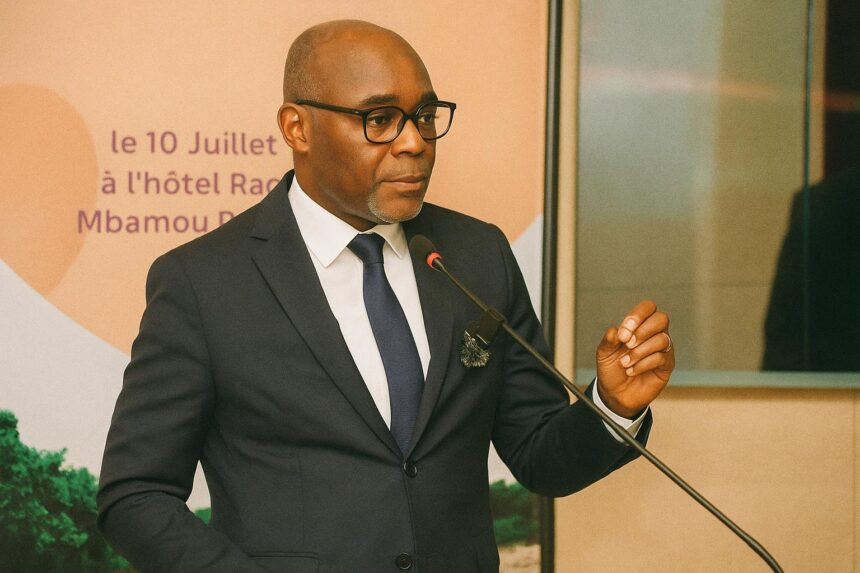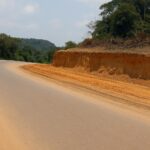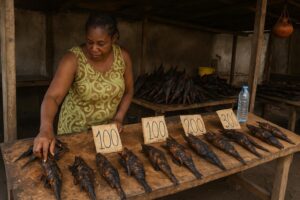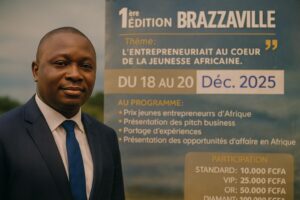Macroeconomic Momentum in Early 2025
Against a regional backdrop still marked by cautious recovery, the Congolese National Economic and Financial Committee declared that the first quarter of 2025 closed with a marginally firmer macroeconomic position. Real GDP is projected to expand by 1.8 percent over the year, up from 1.5 percent in 2024, a pace that senior officials described as “encouraging, albeit below potential” (BEAC Quarterly Report, April 2025). The communiqué points to a dual engine: sustained capital expenditure in hydrocarbons and steady, if uneven, progress in construction, telecoms and agro-industry. International observers at the African Development Bank have also noted a gradual revival in trade flows along the Pointe-Noire corridor, a trend that supports CNEF’s cautiously optimistic narrative.
Crucially, the Committee underlined a return to an overall fiscal surplus for the quarter, helped by firm Brent prices and disciplined expenditure sequencing. The surplus, officials argue, provides leeway for ongoing social programmes and the acceleration of infrastructure commitments linked to the National Development Plan 2022-2026. That said, fiscal analysts in Brazzaville emphasise that the narrow margin leaves little room for exogenous shocks, echoing the IMF’s April 2025 Article IV consultation that encouraged “continued vigilance and targeted consolidation”.
Oil Investment: Still the Main Propeller
The Ministry of Hydrocarbons reports that offshore rigs operated by international partners have maintained an average utilisation rate above 93 percent since January, an outcome that feeds directly into the improved headline numbers. Bruno Jean-Richard Itoua reiterated that recent revisions to the Hydrocarbons Code seek to extend production-sharing contracts while ensuring a higher local content threshold. Industry consultants at Rystad Energy calculate that upstream investments for 2025 could reach 2.2 billion USD, a 7 percent increase year-on-year, provided current security and regulatory conditions hold.
While the oil sector’s primacy remains clear, the Committee stressed the contribution of non-oil GDP, which grew by roughly 2 percent over the quarter. The performance of cement and timber exports tempered the historical volatility associated with crude revenues, aligning with President Denis Sassou Nguesso’s pledge to diversify the productive base. Regional economists note that such diversification, though nascent, strengthens the argument for maintaining a measured, rather than abrupt, fiscal adjustment trajectory.
Inflationary Undercurrents and Consumer Resilience
Headline inflation is expected to average 3.5 percent in 2025, marginally above CEMAC’s convergence ceiling of 3 percent. Price acceleration stems mainly from imported foodstuffs and episodic electricity disruptions tied to maintenance at the Moukoukoulou dam. In an interview, a senior BEAC economist observed that “core inflation remains subdued, suggesting that supply factors rather than excess demand are at play”.
Household survey data compiled by the National Institute of Statistics indicate that urban consumption patterns have adapted, with a discernible shift toward locally sourced staples and digital micro-commerce. These behavioural adjustments, though modest, have helped buffer real incomes, an outcome welcomed by the Ministry of Economy, which regards consumer resilience as pivotal for maintaining social cohesion.
Credit Expansion and Financial Soundness
Commercial banks expanded gross lending by 3.3 percent to reach 1 647 billion CFA francs as of 31 March 2025. The decline in non-performing loans to 274.2 billion CFA francs, a 1.3 percent contraction, signals what COBAC Secretary-General Marcel Ondélé termed a “tentative but clear improvement” in asset quality. The sector’s capital adequacy ratio remains above the 8 percent regulatory minimum, bolstered by increased profitability in trade finance and mobile money channels.
The Committee nevertheless cautioned against complacency. It advised banks to continue prudent provisioning, particularly for exposure to state-owned enterprises undergoing restructuring. Moody’s Analytics, in its March outlook, echoed this warning, pointing to the sensitivity of the balance sheet to exchange-rate fluctuations given the dollar-denominated nature of much oil revenue.
Treasury Securities: Signals from Primary Markets
Issuance on the regional debt market moderated during the first four months of the year, with the Treasury’s gross funding requirement down 22.37 percent. Outstanding securities nonetheless stood at 2 528.14 billion CFA francs by end-April, a 6.9 percent year-on-year increase. The Ministry of Finance attributes the lower quarterly appetite to improved cash management and the seasonal upswing in hydrocarbon royalties.
Market specialists welcomed the newly instituted consultation framework between the Treasury and its primary dealers, describing it as a step toward deeper, more liquid markets. According to Louis Banga Ntolo of the BVMAC, the initiative “enhances price discovery and supports investor confidence”, a view shared by Paris-based asset managers that have cautiously re-entered CEMAC paper after last year’s volatility.
Regional Convergence and Policy Outlook
Christian Yoka briefed the Committee on recent CEMAC ministerial directives aimed at anchoring fiscal sustainability. The region has collectively reaffirmed its intent to converge toward a deficit ceiling of 1.5 percent of GDP by 2027, a target seen as compatible with Congo’s medium-term fiscal framework. BEAC Governor Yvon Sana Bangui, addressing participants via videoconference, argued that the external reserve position of the currency union has stabilised, offering “a window to entrench reform gains while supporting growth”.
Looking ahead, the Committee’s communiqué calls for an acceleration of structural reforms, notably in the electricity sector, where supply bottlenecks could otherwise restrain industrial output. It also advocates for enhanced public–private partnerships to crowd in investment, a recommendation echoed by the World Bank’s Country Economic Memorandum released in May 2025.
Measured Optimism for Diplomats and Investors
Congo-Brazzaville enters the remainder of 2025 with a cautiously favourable outlook. Macroeconomic fundamentals are trending positively, liquidity is improving, and governance initiatives in fiscal and monetary spheres appear to be gaining traction. Yet the path forward is not devoid of risk: import-driven inflation, potential oil-price swings, and the still-evolving regional security environment could test policy agility.
For diplomatic and investment communities alike, the overarching message from Brazzaville is one of measured optimism. Continued engagement with multilateral partners, prudent debt management, and strategic diversification are likely to determine whether the green shoots observed in the first quarter mature into sustained, broad-based growth by year-end.






















